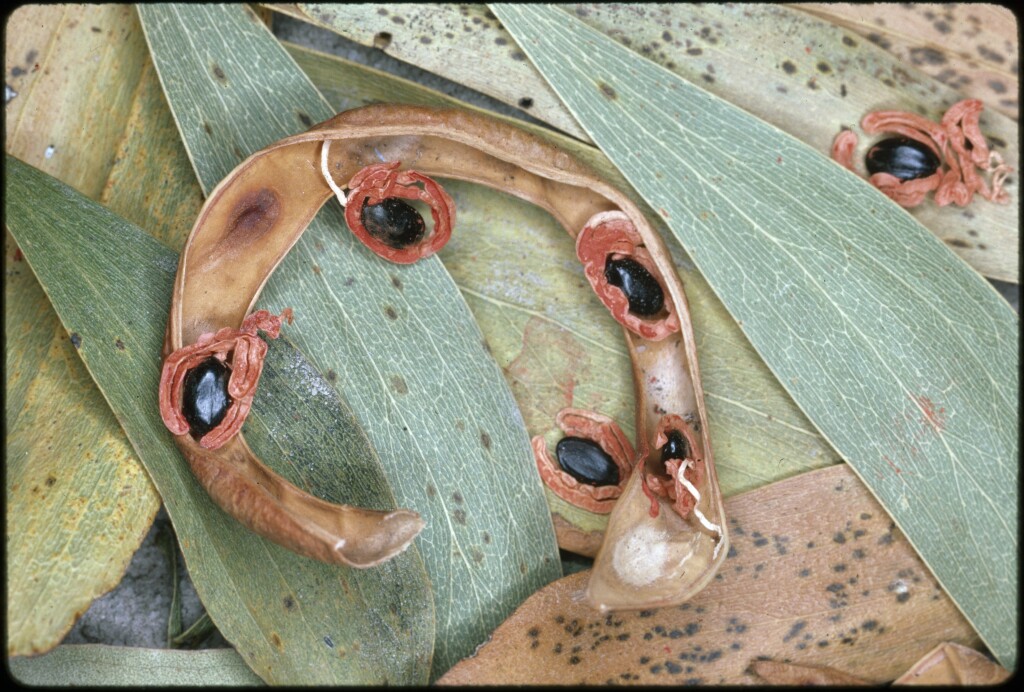Acacia melanoxylon
R.Br. BlackwoodSmall to large tree, c. 3–45 m high; branchlets angular, becoming terete, ribbed, minutely scurfy and slightly hairy, or glabrous. Phyllodes inclined to ascending, narrowly elliptic, lanceolate or oblanceolate, 4–16 cm long, 6–25 mm wide, broadest near or above middle, straight to slightly curved, somewhat coriaceous, glabrous, acute to acuminate, commonly callose-apiculate; main veins 3–5, raised, distant, with numerous secondary veins commonly anastamosing. Racemes mostly 3–5-headed, rachis 6–40 mm long; peduncles 4.5–13 mm long, scurfy with resin cells and sometimes scattered hairs; heads globular, c. 6 mm diam., 30–56-flowered, pale cream to pale golden. Flowers 5-merous; sepals three-quarters to completely united. Pods linear, to 15 cm long, 3.5–10 mm wide, coriaceous to woody, twisted, glabrous; seeds longitudinal, broadly elliptic, 3–5 mm long, glossy black; funicle fleshy, pink to deep red, twice-encircling seed loosely. Flowers Aug.–Oct.
LoM, MuM, Wim, GleP, Brid, VVP, VRiv, MuF, GipP, OtP, WaP, Gold, CVU, GGr, DunT, NIS, EGL, EGU, WPro, HSF, HNF, OtR, Strz, MonT, HFE, VAlp. Also SA, Qld, NSW, Tas. Widespread and often common, growing in a diversity of habitats but favouring fertile soils in valleys and on flats in mountainous areas, often in wet sclerophyll forest and rainforest.
Acacia melanoxylon is one of the most wide-ranging tree species in eastern Australia and considerably variable, particularly in phyllode size and shape in which the variation is continuous (Farrell & Ashton 1978; Playford et al. 1993). It is related closely to A. implexa which differs in phyllode shape and size, the partly united petals, its white, fleshy funicle which forms one loop over the apex of the seed, its glabrous rachis and later flowering time. It is also related to A. frigescens which has more or less pruinose young branchlets, phyllodes that are proportionately longer, partly united petals and the funicle disposed in about three loops over the apex of the seed.
Wood prized for cabinet work and panelling, and for stringed instruments.
Entwisle, T.J.; Maslin, B.R.; Cowan, R.S.; Court, A.B. (1996). Mimosaceae. In: Walsh, N.G.; Entwisle, T.J., Flora of Victoria Vol. 3, Dicotyledons Winteraceae to Myrtaceae, pp. 585–658. Inkata Press, Melbourne.
 Spinning
Spinning




